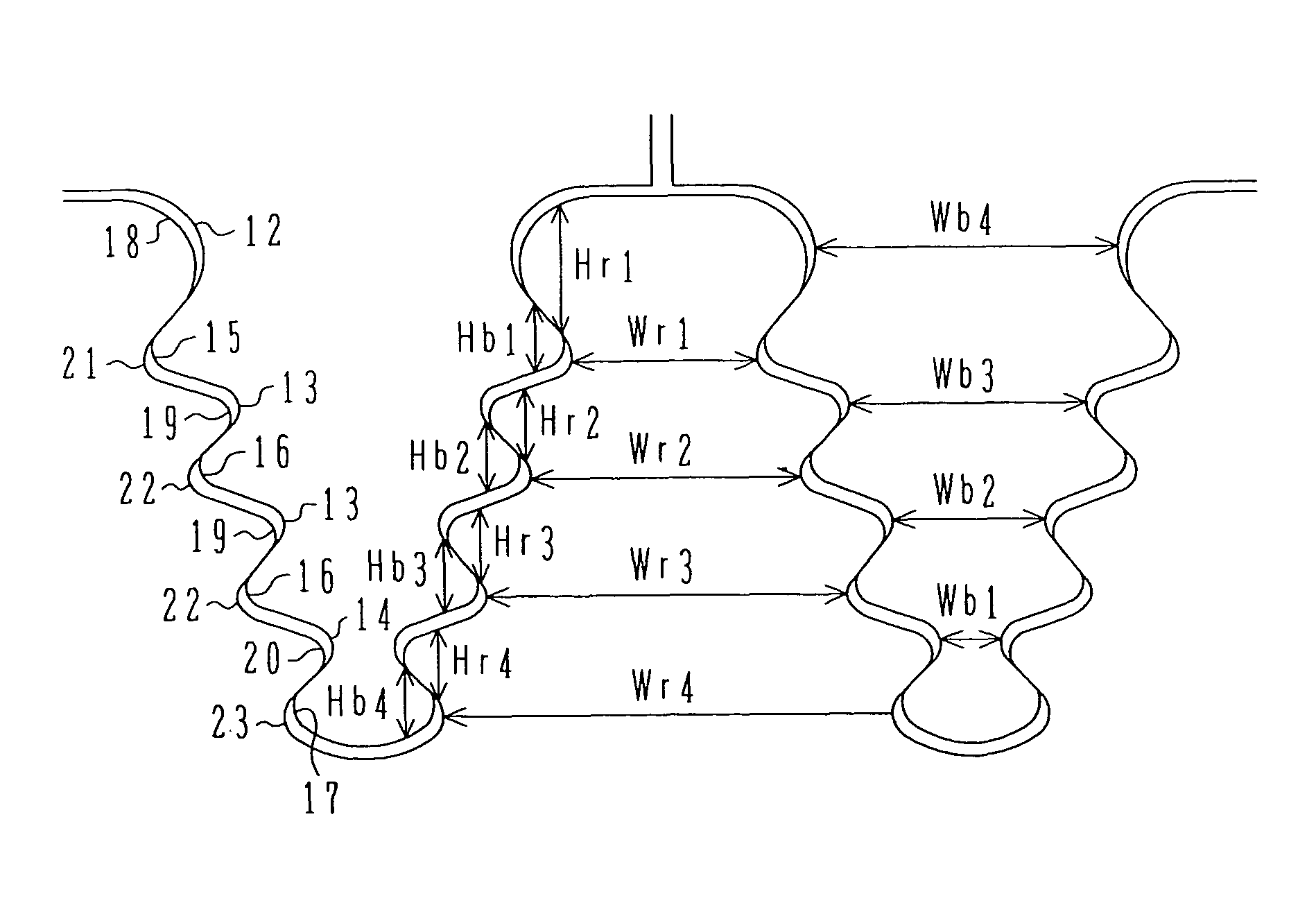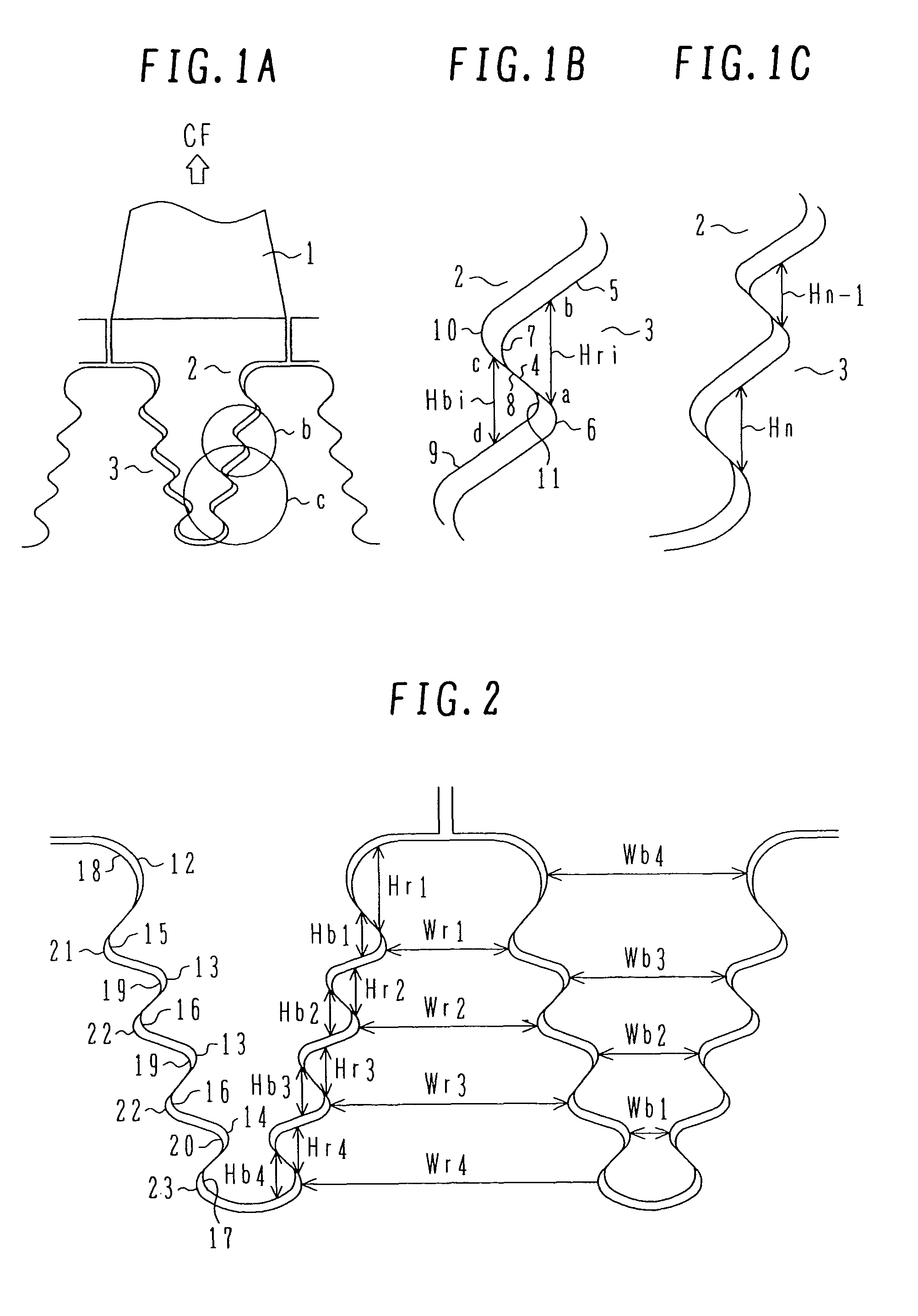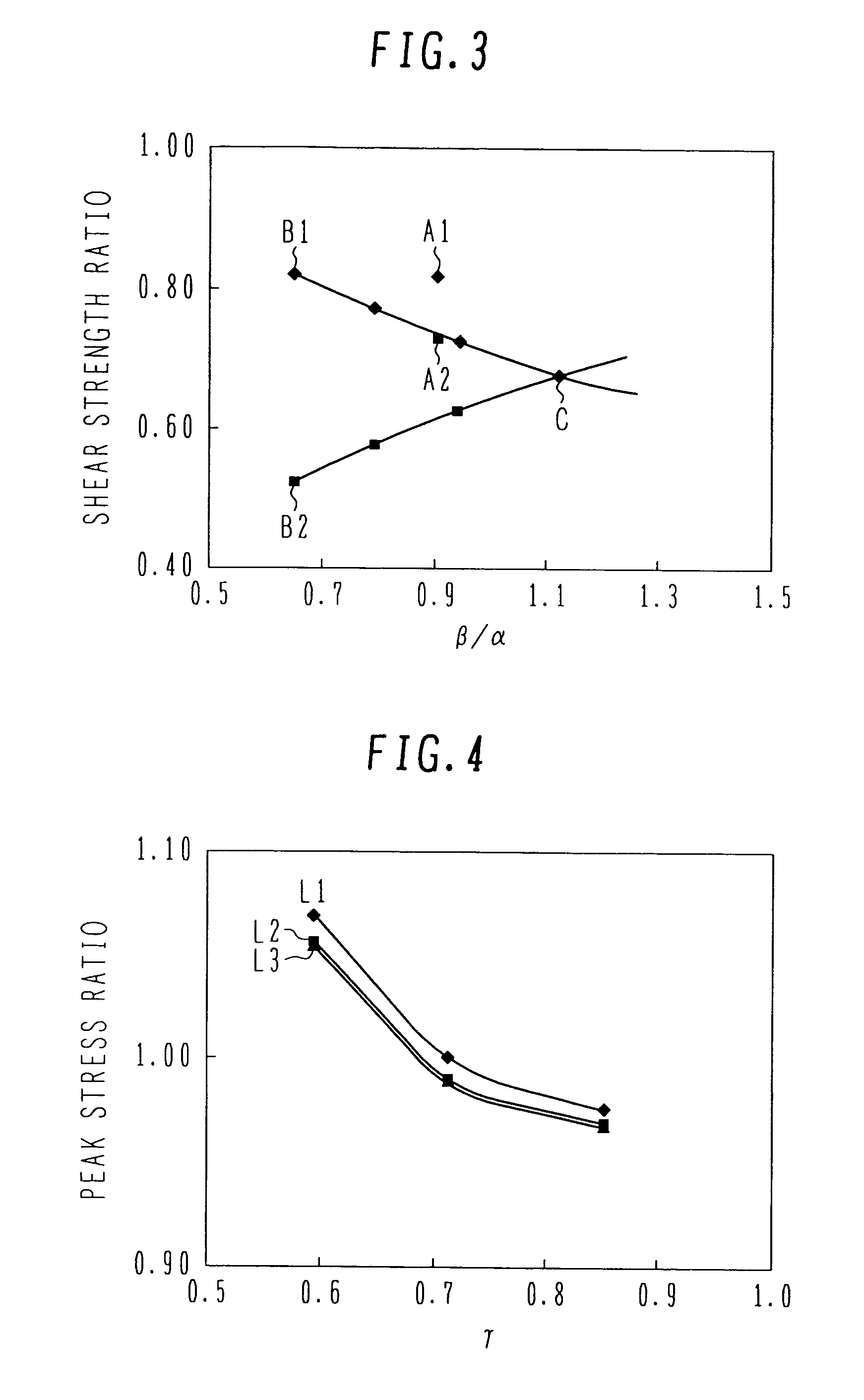Steam turbine rotor, inverted fir-tree turbine blade, low pressure steam turbine with those rotors and blades, and steam turbine power plant with those turbines
a technology of inverted fir-tree turbine blades and steam turbines, which is applied in the direction of liquid fuel engines, vessel construction, marine propulsion, etc., can solve the problems of severe influence, and reduce shear stress in the rotor hook. , the effect of reducing the shear stress
- Summary
- Abstract
- Description
- Claims
- Application Information
AI Technical Summary
Benefits of technology
Problems solved by technology
Method used
Image
Examples
first embodiment
[0028]FIG. 1A is a partial cross-sectional view of a turbine rotor according to the present invention, FIG. 1B is an enlarged view of an area b in FIG. 1A, and FIG. 1C is an enlarged view of an area c in FIG. 1A. This first embodiment is related to a turbine rotor 3 in which the tensile strength of a blade material is 965-1325 MPa and the tensile strength of a rotor material is 825-945 MPa, namely the tensile strength of the blade material is 1.2-1.6 times that of the rotor material, and in which the turbine rotor has an attachment structure with respect to an inverted fir-tree blade root 2 extending from a turbine moving blade 1 in a direction toward the rotor center.
[0029]In the turbine rotor 3 having the attachment structure with respect to the turbine blade 1 having the inverted fir-tree blade root 2, four hooks are formed in each of the blade root and a rotor groove. The blade root is inserted in the axial direction of the turbine rotor such that the respective hooks of the bla...
second embodiment
[0051]FIG. 7 is an enlarged cross-sectional view of principal parts of the turbine rotor according to the present invention. The hook of the turbine rotor 3 is shaped such that the hook contact surface 4 and the hook non-contact surface 5, shown in FIG. 1, are interconnected by a flat surface 24 and inscribed circular surfaces 25 and 26 formed on both sides of the flat surface 24. With such a structure, the circumferential-direction size of the turbine rotor hook can be reduced in comparison with the hook of the first embodiment in which the hook contact surface 4 and the hook non-contact surface 5 are interconnected by one inscribed circular surface 7. Therefore, the tensile stress in the blade neck can be reduced and workability can be increased. Though not shown in FIG. 7, the turbine blade 1 is also preferably formed such that surfaces corresponding to the hook contact surface 4 and the hook non-contact surface 5 are interconnected by surfaces similar to the flat surface 24 and ...
third embodiment
[0054]FIGS. 8A and 8B show a long blade for 3000 rpm, which has an airfoil height of 48″ (inches) and is used as the last stage blade of a low-pressure steam turbine according to the present invention. Specifically, FIG. 8A is a front view and FIG. 8B is a side view. As shown in FIG. 8, a blade root 52 is in the form of an inverted fir tree and has four stages of straight hooks on each of opposite sides of the blade root 52. Such blade hooks and blade necks have the same structure as that in the first or second embodiment. The blade root having those blade hooks and necks are attached respectively to corresponding rotor hooks and necks. An airfoil 51 has a thickness that is at maximum in the root and is gradually reduced toward its tip.
[0055]The last-stage blade in this third embodiment is made of steel which contains 0.15-0.40% by weight of C, 0.5% or less of Si, 1.5% or less of Mn, 2.0-3.5% of Ni, 8-13% of Cr, 1.5-4.0% of Mo, 0.05-0.35% of V, 0.04-0.15% of N, and, as required, 0.0...
PUM
 Login to View More
Login to View More Abstract
Description
Claims
Application Information
 Login to View More
Login to View More - R&D
- Intellectual Property
- Life Sciences
- Materials
- Tech Scout
- Unparalleled Data Quality
- Higher Quality Content
- 60% Fewer Hallucinations
Browse by: Latest US Patents, China's latest patents, Technical Efficacy Thesaurus, Application Domain, Technology Topic, Popular Technical Reports.
© 2025 PatSnap. All rights reserved.Legal|Privacy policy|Modern Slavery Act Transparency Statement|Sitemap|About US| Contact US: help@patsnap.com



